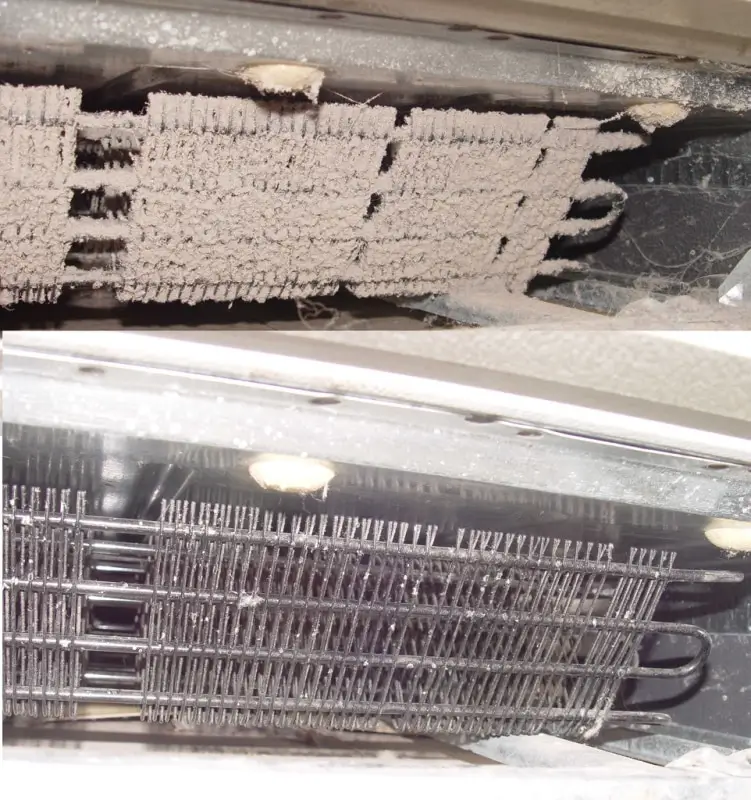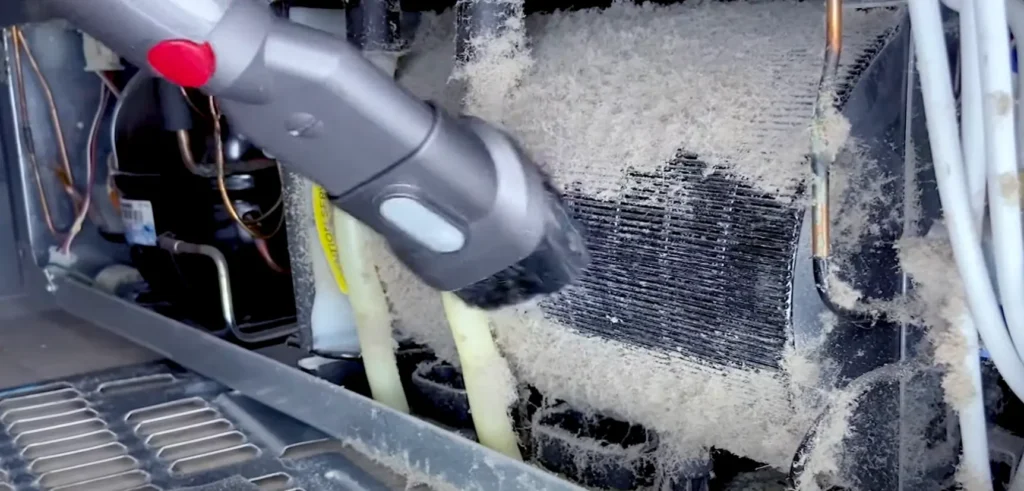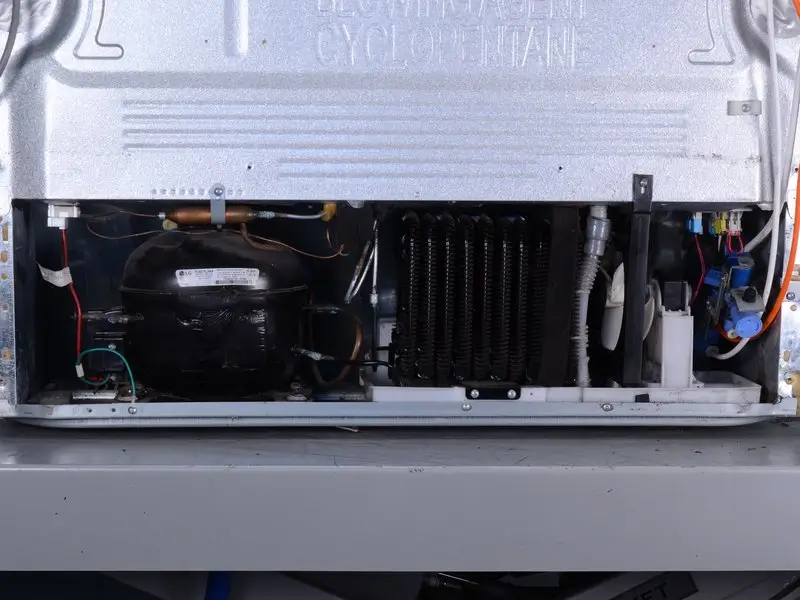So it looks like your LG refrigerator’s bottom freezer isn’t pulling its weight, huh? Well, don’t sweat it – we’ve got some tips to help you troubleshoot the issue.
From checking the compressor and coils to making sure the evaporator fan motor is kicking into gear, we’ll have your appliance back to keeping things cold enough in no time.
Key Takeaways:
- Ensure freezer temperature is set correctly between -16°C to -17°C (0°F to -2°F).
- Check and clean the freezer door gasket for proper sealing.
- Verify refrigerator location for stable temperatures and proper airflow.
- Clean condenser coils regularly.
- Test and potentially replace internal components like the compressor, start relay, or control board.
Main common reasons for LG refrigerator bottom freezer not working
Cause 1: The freezer temperature is set too high. Make sure the freezer temperature is set between -16°C to -17°C (0°F to -2°F).
Solution:
If your freezer isn’t freezing properly, it might be set too high.
Here’s how you can fix it:
Press the [Freezer] button on the control panel to change the temp settings.

Lower the temp to between -16°C to -17°C (0°F to -2°F). This range might be slightly different depending on your model.
For models with a dial control, turn the dial clockwise to lower the temp.
Give it 24 hours to stabilize and then check if it’s cold enough.
If it’s still not cold enough, lower the temp a bit more and wait another 24 hours.
Your owner’s manual will have more specific info for your model. If the temperature is too high, your food might not freeze solid. Lowering the temp should fix this.
Cause 2: Freezer door is not closing properly. Check that the door gasket is clean and the shelves/baskets are properly assembled so the door can seal fully.
Solution:
You know that annoying problem when your LG fridge’s bottom freezer won’t close right? Nine times out of ten, it’s because the freezer door gasket is either dirty or damaged, messing up the seal. Here’s how you can tackle this:
First, take a good look at the freezer door gasket. Are there any cracks, tears, or worn-out spots in the rubber seal? If it’s just dirty, grab a warm, soapy cloth or sponge and give it a good clean. Make sure you wipe away any food bits, grime, or debris that might be stopping the door from sealing properly.
Next, make sure everything inside the freezer is in its place. Check that all the shelves, baskets, and drawers are properly installed and not blocking the door. Also, double-check that the freezer drawer is inserted correctly, with the “Front” and “Back” markings lined up properly.
Once the gasket is clean and the freezer’s organized, try closing the door slowly. Look to see if the gasket seals all the way around the door frame without any gaps. The door should close firmly and easily.
If the door still won’t close right after all this, the gasket might need replacing. You can order a new one from LG or an appliance parts retailer. Just follow the manufacturer’s instructions to install it correctly.
Cause 3: Refrigerator is installed in an unsuitable location. It should be placed in a room with a stable temperature between 5°C to 43°C (41°F to 109°F), away from heat sources.
Solution:
First, take a look around and see if it’s near any heat sources or in a spot where the temperature keeps changing. If it’s too close to the oven or getting hit by direct sunlight, that’s not great. Make sure there’s enough space around it – cramped spaces can mess things up.
If you can, move the fridge to a better spot. Try to keep it away from heat and in a stable temperature area. No direct sunlight or near heat-generating appliances, and avoid those spots where the temp changes a lot.
Check that there’s good airflow, especially at the back where the coils are. Don’t block the vents or push the fridge too close to the wall.
Use a thermometer to check the room temperature. You want it to stay between 5°C and 43°C (41°F to 109°F). If it’s outside that range, your fridge might struggle.
If the fridge still isn’t keeping cool, try adjusting the temperature settings. Lowering the thermostat can sometimes help it cope better with the environment.
Cause 4: condenser coils are dirty or frozen over. Clean the condenser coils to allow proper heat dissipation.
Solution:
Turn off the power to the fridge and pull it out from the wall so you can get to the back.
Find the condenser coils. They’re usually hiding behind a metal panel on the back. Take off the panel to get to the coils.

Take a look at the coils. If they’re covered in dust, dirt, or frost, that’s your problem. If they’re frosty, leave the fridge unplugged until they fully defrost.
Once you can see the coils, grab a vacuum cleaner with a narrow hose attachment and give them a good clean, get rid of all the visible dust and gunk.
For any stubborn dirt, use a flexible appliance cleaning brush and gently scrub the coils. Be careful not to bend or damage the fins.

Vacuum the coils again to make sure you’ve got all the dust off.
Put the metal panel back on and plug the fridge back in. Give it a few hours to cool down and check if the freezer’s back to working properly.
Cause 4: There is a problem with the compressor, start relay or temperature control board. These internal components may need to be tested and potentially replaced if faulty.
Solution:
If your freezer isn’t getting cold enough, it might be due to a faulty compressor, start relay, or temperature control board. Here’s a simple way to check and maybe fix these parts:
Compressor Issues
Unplug your fridge: Safety first, always!
Remove the back panel: You’ll find the compressor behind it.
Listen for a humming noise: If the compressor isn’t running, grab a multimeter.

Test for continuity: Put the multimeter on the compressor terminals. If there’s no continuity, the compressor is likely bad and needs replacing.
Check for refrigerant leaks: If the compressor is running but not cooling, it might be low on refrigerant. Use a leak detector to find any leaks. Fix the leak and recharge the system with the right amount of refrigerant.
Start Relay Issues
- Find the start relay: It’s a small cylindrical part near the compressor.
- Unplug the fridge again: Can’t stress this enough.
- Remove the start relay: Just pull it out.
- Test with a multimeter: No continuity? Time for a new start relay.
Temperature Control Board Issues
- Locate the control board: It’s usually behind the control panel of your fridge.
- Look for error codes: These codes can tell you if the control board is faulty.
- Test for continuity and voltage: Use your multimeter here too. If it’s not working right, you’ll need to replace it.
Is this compressor gone bad?
Yeah, those are the classic signs that your AC compressor is on its way out. When it acts up like that, you better get that sucker replaced pronto before the whole system goes kaput on you.
Trust me, you don’t wanna be stuck sweating buckets with no cold air blasting. Get that compressor swapped and your AC will be chilling again in no time.
LG Site Support
You can reach out to them via email at US Support’s email or by phone at LG Customer Care No. 1800 315 9999.
You can track the return status of your LG device by visiting the LG Return Authorization Status page.
FAQs
Why is my LG refrigerator not cooling properly?
There could be several reasons for your LG refrigerator not cooling properly, including blocked air vents, a malfunctioning compressor, or issues with the door seal. Ensure proper airflow by checking for obstructions and inspect the compressor and door seals for any signs of trouble.
What should I do if my LG refrigerator’s freezer is working but the fridge section isn’t?
If the freezer is cold but the refrigerator section is not, you may need to check for frosted air vents that could be blocking cold air from reaching the fridge. Thaw any ice buildup and make sure the vents are clear. Additionally, verify that the temperature settings are correct and the door seals are intact.
What steps can I take if my LG refrigerator is making a knocking noise?
A knocking noise from your LG refrigerator might indicate an issue with the compressor or the fans. try to pinpoint the source of the noise. If it’s coming from the compressor, it may require professional servicing. If it’s a fan, ensure nothing is obstructing its movement and check for any signs of damage.
